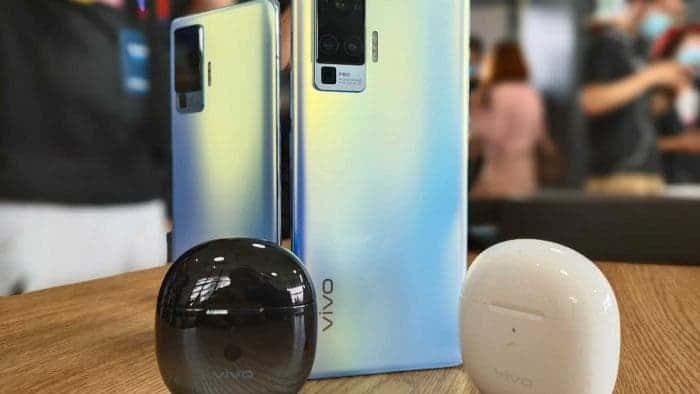Over the past year, we have been writing on the top 10 smartphones for selfies bi-monthly. This article aims to give readers some sort of option when choosing a smartphone especially if they are a selfie freak. Unfortunately, the front camera is not exactly a selling point for most smartphones. Thus, getting smartphones with a good front camera is usually expensive. However, there are some pretty decent and cheap smartphones which have good front cameras. If you are a lover of selfies and one of the reasons you purchase a smartphone is for its selfie capacity, then this article is for you. Because we don’t get to see many smartphones within two months, some devices from our previous column may also make this list.
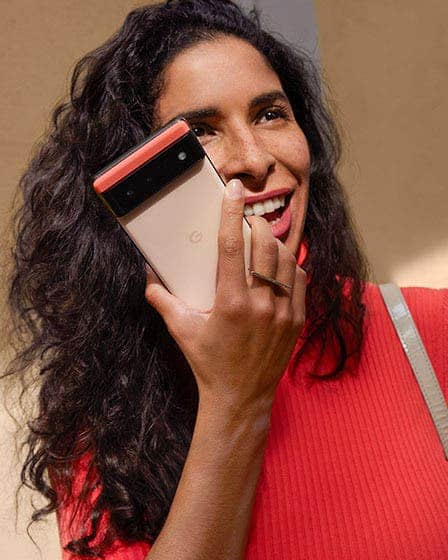
Furthermore, we don’t regularly see improvements in the front camera of smartphones. This is why the Huawei Mate 40 Pro has been one of the best smartphones for selfies on DxOMark since 2020. Making a choice for a decent smartphone with a good front camera may be a bit confusing. However, just get your mind prepared that if you need a good selfie smartphone, it may not be a new device.
Our last edition has a plethora of pretty expensive smartphones for selfies and this list is not any different in terms of price. However, we have some new devices like the Xiaomi Civi 1S as well as the Vivo X80 series all of which were released this month. The Samsung Galaxy M53 is also another April-release smartphone on the list. All these devices come with decent 32MP cameras with strong software optimizations. However, the rest devices on the list are “old” but not obsolete.
If you need a decent smartphone with a front camera that will not disappoint, then you should read this article to the end. Of course, like we always advise, our posts do not always chase megapixels. In fact, a high pixel camera does not always mean that it will perform better. There are several optimizations (mostly software) that also determine the output. The likes of Google, Samsung, Apple and Huawei do not usually chase pixel size. However, their cameras on mobile phones are arguably the best in the industry.
Furthermore, as a heads up, our top 10 smartphones for selfies article is a very long read. Thus, if you don’t have the time or patience to go through the entire article, below is the list of smartphones with their front camera specification.
Top 10 smartphones for selfies specs sheet
- Xiaomi Civi 1S: 32 MP, 24mm (wide), 0.8µm, AF, HDR, panorama, 1080p@30/60fps video
- Vivo X80: 32 MP, f/2.5, 26mm (wide), 1/2.8″, 0.8µm, HDR, 4K@30fps, 1080p@30fps
- Vivo X80 Pro: 32 MP, f/2.5, 26mm (wide), 1/2.8″, 0.8µm, HDR, 4K@30fps, 1080p@30fps
- Samsung Galaxy M53: 32 MP, f/2.2, 26mm (wide), 4K@30fps, 1080p@30fps
- Huawei P50 Pro: 13 MP, f/2.4, (wide), AF; Panorama, HDR; 4K@30fps, 1080p@30/60/240fps
- Huawei Mate 40 Pro: 13 MP, f/2.4, 18mm (ultrawide); TOF 3D, (depth/biometrics sensor); HDR, panorama; 4K@30/60fps, 1080p@30/60/240fps
- Huawei P40 Pro: 32MP 1/2.74-inch sensor with 0.8µm pixels, Dual front camera, 26mm, f/2.2-aperture, 4K 2160/30fps video
- Google Pixel 6 Pro: 11.1 MP, f/2.2, 20mm (ultrawide), 1.22µm; Auto-HDR, panorama; 4K@30fps, 1080p@30/60fps
- Xiaomi 12 Pro: 32 MP, 26mm (wide), 0.7µm; HDR, panorama; 1080p@30/60fps, 720p@120fps
- Asus ZenFone 7 Pro: Motorized flip-up main camera module; 64 MP, f/1.8, 26mm (wide), 1/1.72″, 0.8µm, PDAF, OIS; 8 MP, f/2.4, 80mm (telephoto), PDAF, OIS, 3x optical zoom; 12 MP, f/2.2, 113˚, 17mm (ultrawide), 1/2.55″, 1.4µm, dual pixel PDAF; Dual-LED flash, HDR, auto panorama (motorized rotation); 8K@30fps, 4K@30/60/120fps, 1080p@30/60/240fps, 720p@480fps; gyro-EIS, HDR
Top 10 smartphones for selfies – Disclaimer
The devices in the list are, in our opinion, great smartphones for selfies. Since we don’t get to see great smartphones for selfies regularly, some devices from our previous column may make an appearance in this column. If you are a selfie freak or you buy your smartphones for their selfie ability, then check out our list of good recommendations.
1. Xiaomi Civi 1S
The Xiaomi Civi 1S is a really beautiful smartphone and its beauty is this device’s selling point. Well, its beauty did not earn it a place in the top 10 smartphones for selfies list. This device is not only beautiful, the selfie camera capacity is a very good one for selfie lovers. The Xiaomi Civi 1S comes with a 32MP selfie shooter with an f/2.4 aperture. For videos, this device supports 1080p@30/60fps video. Furthermore, this device support HDR which limits light from overexposure and preserves the details where there is no light. This creates a balance in terms of colour, texture, and details.
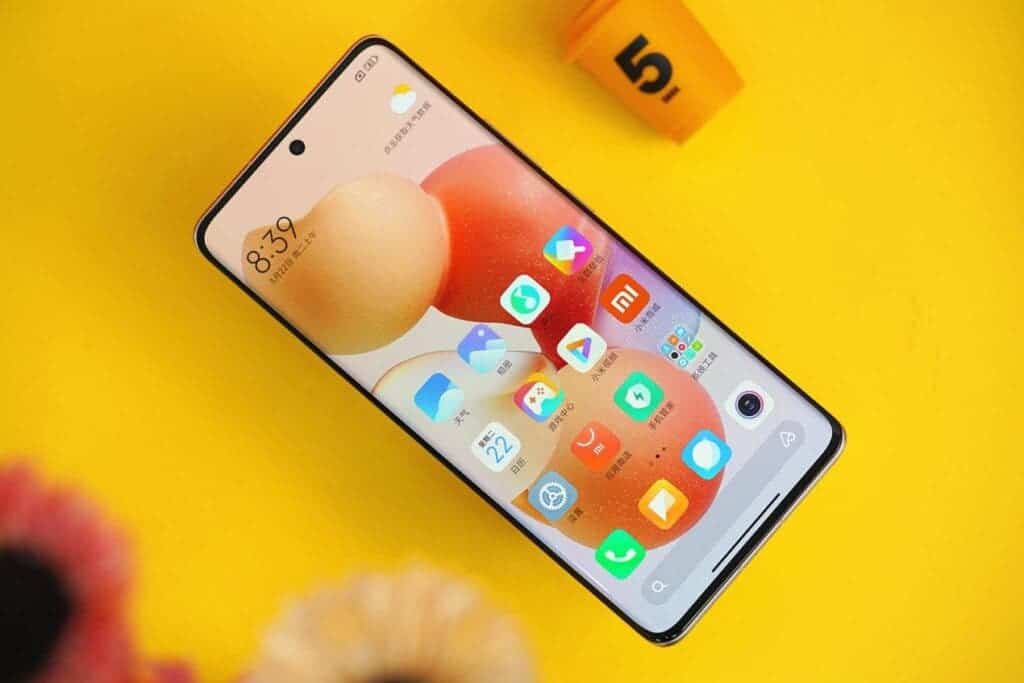
Key front camera specifications:
- 32MP autofocus front camera with f/2.4 aperture
- HDR
- AF, dual soft LED flash
- Panorama
- 1080p@30/60fps video
Xiaomi Civi 1S succinct preview
The Xiaomi Civi 1S comes with a 6.55 inch AMOLED screen display that supports 1080 × 2400 pixels resolution and a 120Hz refresh rate. Under the hood, this smartphone uses the Snapdragon 778G+ 6nm chip with Adreno 642L GPU. Furthermore, it supports 8GB/12GB LPDDR4X of RAM and 256GB of internal storage. On the rear, it has a triple camera setup which includes a 64MP main sensor, 8MP 120° ultra-wide sensor, and 2MP macro camera. The thinness and lightness of this smartphone are one of its major selling points. This device comes with Xiaomi’s own 120W fast charger which weighs 183g. However, it will surprise you to note that the Xiaomi Civi 1S itself weighs just 166g. This means that the charger of this device is 17g heavier than the smartphone itself.
2. Vivo X80
The Vivo X80 series was only released a few days ago and this series has two smartphones – Vivo X80 and X80 Pro. Just like other Vivo smartphones, the camera department is the main selling point of this device. The Vivo X50 Pro uses a 32MP (f/2.5 wide-angle, 1/2.8″, 0.8µm) single front camera. The front camera also supports HDR and 4K@30fps, 1080p@30fps videos.
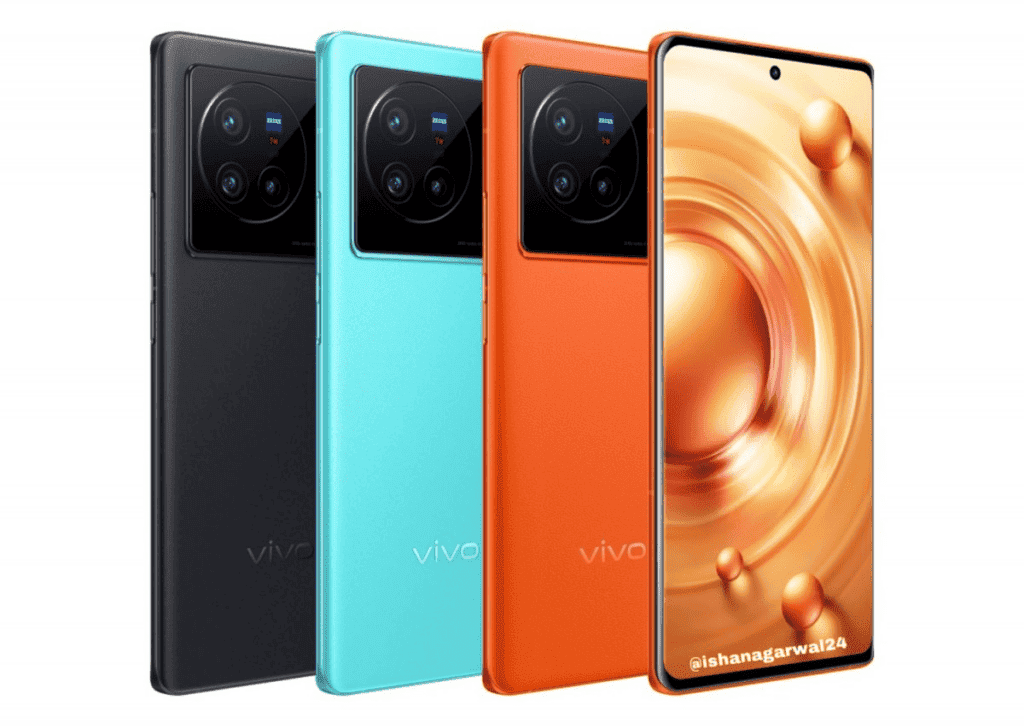
This device offers good lowlight photos and to make this more interesting is the stabilization during shooting. The stabilization feature also extends to videos. The company also did some optimization with its selfie camera. The beauty mode comes with some skin smoothening even. All these and more earn this series a place in the smartphones for selfies list.
Vivo X80 succinct spec preview
This smartphone is the first to come with the two leading flagship processors in the market. It comes with the Snapdragon 8 Gen 1 SoC as well as the Dimensity 9000 SoC. The Vivo X80 has a 6.78-inch full-HD+ AMOLED display with a centre punch hole design. The panel also has a 120Hz refresh rate. It has 8GB / 12GB of RAM and 256GB / 512GB of internal storage. Furthermore, this device comes with a 4,700mAh battery that supports an 80W fast charge and 50W wireless fast charging. This smartphone also supports reverse charging. The company claims that this battery is capable of delivering all-day battery life.
3. Vivo X80 Pro
There is no doubt about Vivo’s performance in the selfie camera department. In fact, this company is doing well and places more emphasis on front camera performance. These days, Vivo hardly uses a selfie camera below 20MP. The Vivo X80 Pro comes with a 32 MP front camera and the output is great.
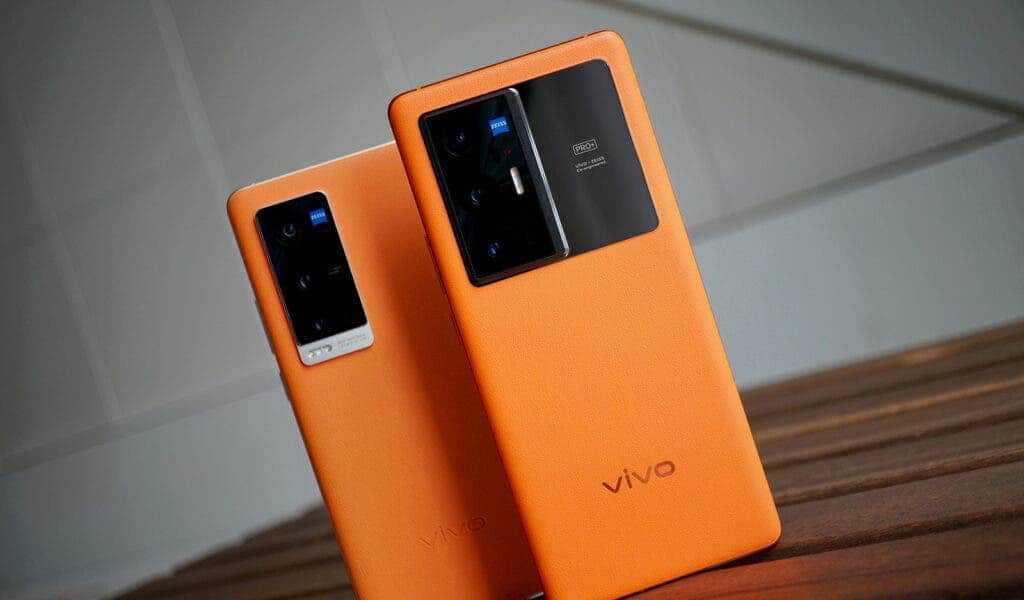
Key front camera specifications:
- Primary 32 MP
- F/2.5, 26mm (wide), 1/2.8″, 0.8µm
- HDR
- 4K@30fps, 1080p@30fps
The front camera supports HDR and 1080p@30fps videos. However, unlike the Vivo X60 Pro which lacks support for 4K videos, the Vivo X80 Pro supports 4K videos. This is another selling point for this smartphone. Furthermore, this device has some interesting features like portrait video, colour pop mode, and Night Mode tripod setting that make it stand out. Interestingly, the video mode of this device supports Ultra Steady stabilization and anti-shake algorithms. Not many manufacturers include stabilization features for the front camera. The final output is quite excellent with a focus on the face.
Vivo X80 Pro succinct spec preview
This smartphone comes with a 6.78 inch AMOLED display that supports 1440 x 3200 pixels resolution. Just like the regular model, the Pro model also has two options in terms of processors. It has the Snapdragon 8 Gen 1 SoC as well as the Dimensity 9000 SoC models. It has 8GB / 12GB of RAM and 256GB / 512GB of internal storage. This smartphone comes with a quad rear camera setup. It uses a 50MP main camera as well as an 8MP periscope telephoto sensor, a 12MP telephoto shooter and a 48MP ultrawide angle camera.
Furthermore, this device comes with a 4,700mAh battery that supports an 80W fast charge and 50W wireless fast charging. This smartphone also supports reverse charging. The company claims that this battery is capable of delivering all-day battery life.
4. Samsung Galaxy M53
The Samsung Galaxy M series is one of the company’s mid-range series that also comes with decent cameras. This smartphone was only released a few days ago and it is currently available in the market. However, it is one of the pretty decent smartphones for selfies. It uses an impressive 32MP front camera. Only a few devices mostly from Vivo have better (in terms of pixel size) with 44MP. This premium mid-range smartphone comes with a significant performance increase. The amazing hardware (fine-tuned processor) further supports the front camera for a “perfect” selfie output.
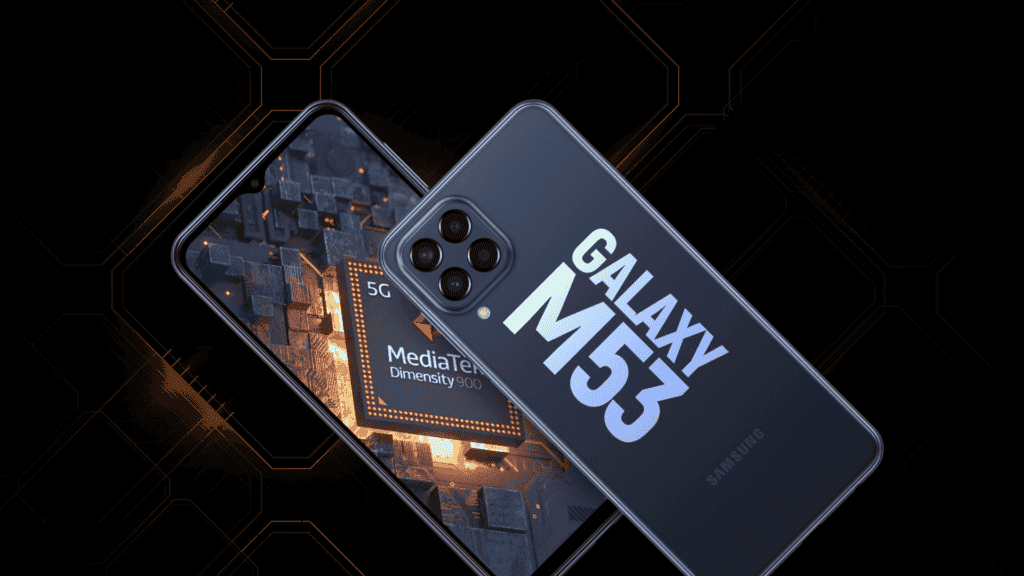
First off, the Galaxy M53 camera offers wide-angle shots, this is not very common for the front camera. Furthermore, this smartphone also supports 4K videos, another selling point of the front camera. The optimizations of the camera are even more interesting than the pixel size. Samsung packs a host of software optimization to improve the selfie quality. This device comes with better image stabilization and a night mode for low-light photography.
Key front camera specifications:
- 32 MP sensor with 0.8µm pixels
- Fixed-focus f/2.2-aperture lens
- HDR; 26mm (wide), 1/2.8″
- 4K@30fps, 1080p@30fps
Samsung Galaxy M53 succinct specs preview
The Samsung Galaxy M53 comes with a 6.7-inch Super AMOLED display. This display isn’t exactly of the same level as high-end flagships but you will get a super-bright display with 394 PPI density. This smartphone supports a resolution of 1080 x 2408 pixels and a display ratio of 20:9 ratio.
Under the hood, this device comes with a mid-range processor, MediaTek Dimensity 900 SoC. This chip is not flagship but it offers enough power and a lag-free experience. The Galaxy M53 also comes with up to 6GB / 8GB of RAM and 128GB of internal storage. However, the internal storage is expandable with a microSD card up to 512GB. On the rear, it has a quad-camera setup which includes a huge 108MP wide-angle main camera, an 8MP ultrawide, a 2MP depth as well as another 2MP macro sensor. The battery size is 5000 mAh and it supports 25W wired fast charging.
5. Huawei P50 Pro
A few months ago, Chinese manufacturing giant, Huawei officially released the Huawei P50 series. The Pro model of this series, the Huawei P50 Pro, almost instantly climbed to the top of the selfie ranking on DxOMark. In fact, its rear camera is also the best smartphone camera on DxOMark ranking. We didn’t have to struggle with the decision to include this device as one of the top smartphones for selfies. This smartphone also made our top 10 smartphones for selfies in August. However, continues to have a spot here due to its blistering performance.
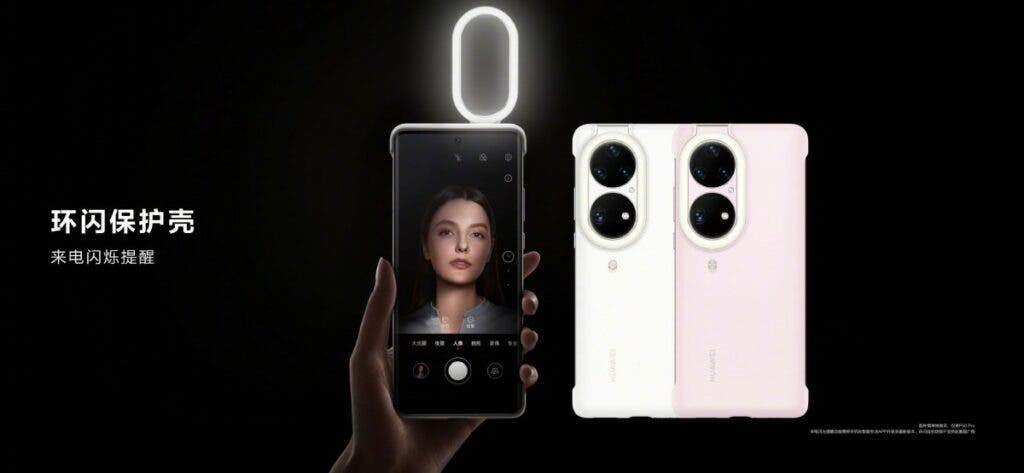
The Huawei P50 Pro front camera specification is not very different from last year’s Mate 40 Pro. This device comes with a 13 MP Sony IMX688 sensor (f/2.4-aperture lens with an 18 mm-equivalent focal length). Although this sensor is just 13MP, it performs better than many 32MP front cameras in the market. The front camera optimizations from Huawei are also another beautiful aspect of this device.
Unlike the Huawei Mate 40 Pro, the Huawei P50 Pro front camera comes with phase-detection autofocus (PDAF) system. This makes this smartphone the first Huawei device to come with this technology. The Chinese manufacturer also uses Artificial Intelligence (AI) to optimize the image quality of the front camera.
For better videos, the Huawei P50 Pro comes with staggered HDR processing and improved EIS (electronic image stabilization). While the HDR improves the image quality in low-light conditions and the wider lenses stabilize the image effect, the EIS helps with cropping and blurred images.
Generally, the Huawei P50 Pro front camera has very good exposure in both photos and videos. It also comes with a wide dynamic range while the white balance is quite accurate. Nevertheless, in low-light environments, the details are not as good and some noise may appear. Occasionally, users may experience autofocus and inaccurate skin tone issues. The dynamic range also significantly reduces in low-light videos.
Key front camera specifications:
- 13 MP 1/2.8″ sensor with 1.22µm pixel size
- 18 mm-equivalent lens with f/2.4 aperture
- PDAF, EIS
- 4K video, 2160p/60 fps, (2160p/30 fps tested)
Huawei P50 Pro succinct specifications
This smartphone comes with a 6.6-inch OLED display that supports a resolution of 1228 x 2700 pixels (~450 PPI density). Under the hood, we have a Kirin 9000 5nm chip that supports 5G. However, it is important to note that the Huawei P50 Pro can only use this device with 4G network. In addition to the Kirin 9000, some models of this device use the Snapdragon 888 4G SoC. This chip is also a 5nm processor that supports only 4G. This means that the Huawei P50 Pro does not support 5G connectivity.
In addition to the processors, this flagship smartphone also has up to 12GB of RAM and 128GB/256GB/512GB of internal storage. On the rear, it uses a quad camera setup. It has a 50MP main camera, a 13MP (ultrawide), 64MP periscope telephoto, and a 40MP black and white sensor. To keep its lights on, this device uses a 4360 mAh battery that supports 66W fast charging, and 50W wireless fast charging. This flagship smartphone is the first device to come with HarmonyOS 2 out-of-the-box. Of course, it does not support Google Mobile Services.
6. Huawei Mate 40 Pro
There is a reason why the Huawei Mate 40 Pro is on top of DxOMark’s selfie camera rating with 104 points. This smartphone uses some of the best selfie camera optimizations in the industry. In our previous edition, we listed the Huawei P40 Pro+ which also has a great selfie camera. Nevertheless, Huawei Mate 40 Pro offers much more
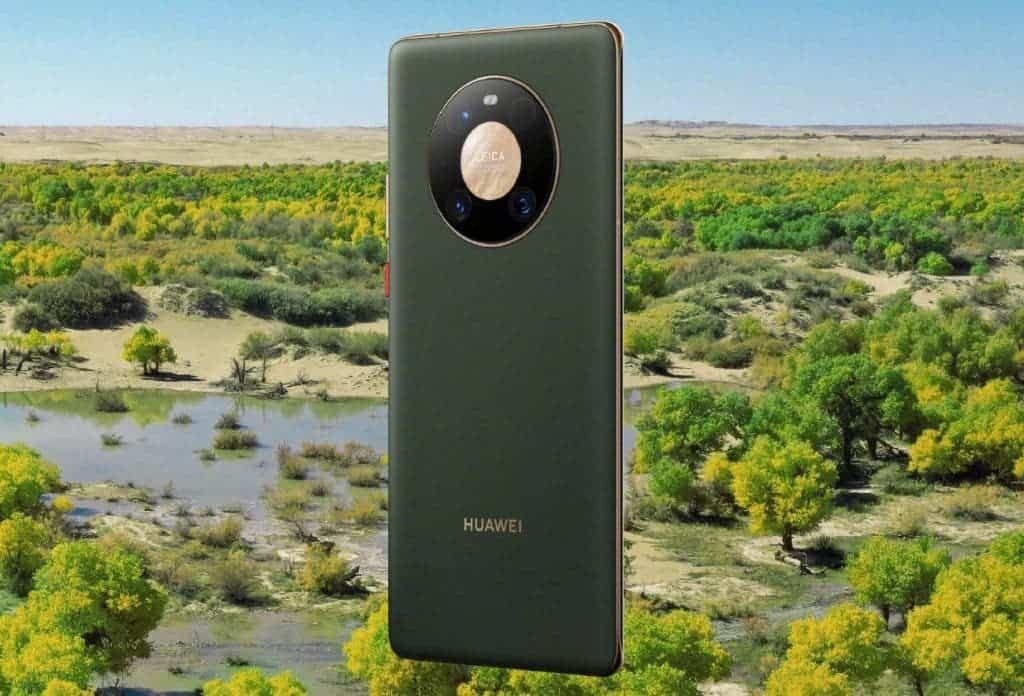
Key front camera specifications:
- Primary 13 MP 1/2.8″ sensor
- f/2.4 – aperture lens with 18 mm-equivalent focal length
- Time-of-flight camera for depth estimation
- Fixed focus
- Display-flash
- 4K video at 30fps
The Huawei P40 Pro comes with Face Beautification. With this feature, you just relax and let the phone do all the editing for you. One of the strengths of the Huawei P40 Pro is its noise reduction, good colour exposure, and excellent bokeh. With the dedicated IR sensor, the bokeh shots are nothing short of excellent. This sensor provides accurate depth estimation and masking around the subject during background blur. While the focus is great, it is probably the only aspect of this camera that the industry has better. Nevertheless, the focus capture faces perfectly at close range but appears to lose details as the distance gets longer (even using a selfie stick).
Whether you are dealing with indoor or outdoor shooting, the Huawei Mate 40 Pro+ is pretty impressive. The accurate autofocus and image stabilization make this camera even more attractive. Overall, there is very little or nothing to complain about with the Huawei Mate 40 Pro+
Huawei Mate 40 Pro succinct spec preview
Before you fall in love with any Huawei device presently, it’s important to know that it does not come with Google Mobile Services. This means that you can have access to Google Play Store. No Gmail, Google Map, YouTube, nothing. Thus, if you are living outside China, you may want to think about this before you consider this device. Although Huawei has HMS, which is supposed to be an alternative for GMS, it is not quite at GMS’s level and is still lacking some relevant apps. However, if GMS is not a problem, this smartphone has some interesting specs
The Huawei Mate 40 Pro comes with the 5nm Kirin 9000 SoC coupled with 8GB of RAM and 128GB/256GB/512GB of UFS 3.1 internal storage. Furthermore, this device uses a 6.76-inch display that supports 1344 x 2772 pixel resolution as well as a 90Hz refresh rate. Under the hood, there is a 4,200 mAh battery that supports a 66W fast charge, 50W wireless charging, and 5W reverse wireless charging. The battery department is one of the selling points of this smartphone. As of now, there are not many smartphones with 40W wireless charging capacity in the industry.
7. Huawei P40 Pro
If the Huawei P40 Pro is better than the Mate 40 Pro, it would be because of its double pixel size. The Huawei P40 Pro comes with a 32MP 1/2.74-inch sensor and a 26mm-equivalent lens with f/2.2 aperture. Furthermore, this smartphone comes with a dual-camera setup on the front. This is the latest trend in the smartphone market. No doubt, it deserves a place on the smartphones for selfies list. The camera comes with a bokeh mode that uses a secondary infrared (IR) camera for depth sensing and also supports autofocus.
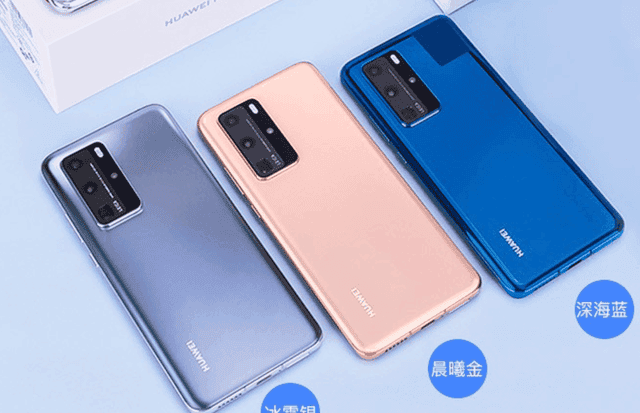
Key front camera specifications:
- Dual front camera
- 32MP 1/2.74-inch sensor with 0.8µm pixels
- 26mm-equivalent f/2.2-aperture autofocus lens
- IR 3D sensor for depth estimation and autofocus
- 4K 2160/30fps video
Before the arrival of the Huawei Mate 40 Pro, the P40 Pro was on top of DxOMark front camera ranking for many months. This smartphone comes with top-notch focus with no instabilities. At close and medium range, the capture of users’ faces is very sharp. At longer distances, the faces are sharp, however, there is some noise in the background. Despite the loss of background details from a longer range, the performance of this device’s front camera is still perfect.
The exposure, colour, flash, noise, and bokeh effect are the strong parts of this smartphone. With the Huawei P40 Pro dedicated IR sensor ensures that its bokeh shots are very impressive. The depth estimation for this device is good and it perfectly eliminates all objects in the background with its blur.
In addition to the top performance of the front camera for images, the video performance is also excellent. According to users, the video and 4K capacity of this smartphone are excellent. It has top exposures, accurate autofocus, effective stabilization as well as pleasant colours. Even in low light conditions, the 4K front camera is not entirely the best but its top quality. If you need good front camera output in terms of images and videos, the Huawei P40 Pro is a smartphone to consider.
Huawei P40 Pro succinct spec preview
This smartphone comes with a 6.58 inch AMOLED display that supports a resolution of 1200 x 2640 pixels (~441 PPI density). Under the hood, we have a Qualcomm Snapdragon Kirin 990 5G (7 nm+) coupled with up to 8GB of RAM and 128GB/256GB/512GB of internal storage. On the rear, it uses a quad camera setup. It has a 50MP main camera, a 40MP (ultrawide), 12MP periscope telephoto, and a ToF 3D sensor. To keep its lights on, this device uses a 4200 mAh battery that supports 40W fast charging, 27W wireless fast charging, and 27W reverse fast reverse wireless charging. This device comes with EMUI 10.1 on top of Android 10 with no Google Play Services.
8. Google Pixel 6 Pro
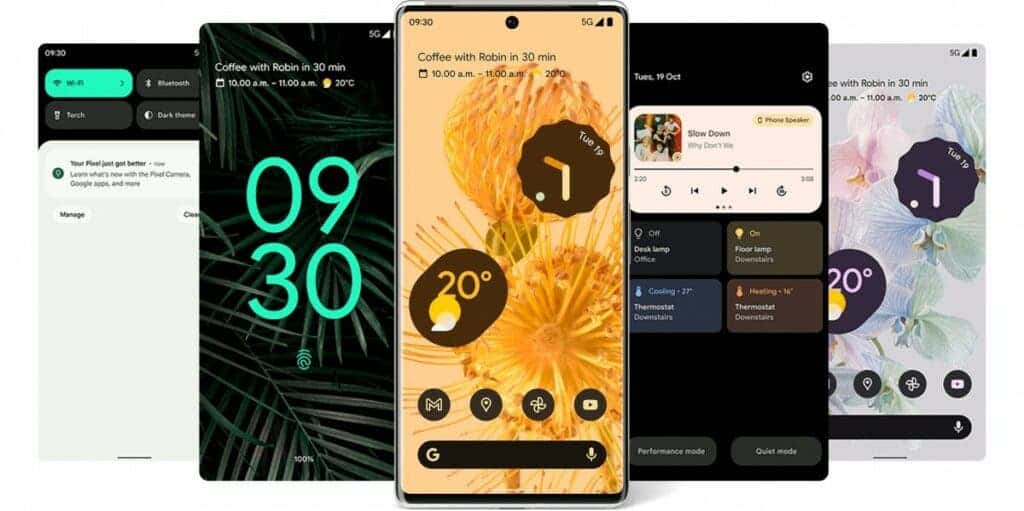
Key front camera specifications:
- 11.1MP 1/4.0″ sensor,
- 1.22 μm pixel width
- f/2.2-aperture lens with 20 mm-equivalent focal length
- Fixed focus
- Display-flash
- 4K@30fps, 1080p@30/60fps
- 94° ultrawide field of view
Google Pixel 6 Pro succinct spec preview
The Google Pixel 6 Pro comes with the 5nm Tensor SoC. The Google Tensor chip is Google’s self-developed processor and the Pixel 6 series launched this chip. Under the hood, the Pixel 6 Pro comes with 12GB of RAM and 128GB/256GB/512GB of UFS 3.1 internal storage. Furthermore, this device uses a 6.71-inch LTPO AMOLED display that supports 1440 x 3120 pixel resolution as well as a 120Hz refresh rate. This device also comes with a huge 5000 mAh battery that supports a 30W fast charge, 23W wireless charging, and reverse wireless charging. The battery department is one of the selling points of this smartphone.
9. Xiaomi 12 Pro
In addition to the fact that this is Xiaomi’s latest flagship smartphone, the Xiaomi 12 has a decent front camera. However, this device does not come cheap as you will have to spend no less than $900 to own it. Released in December 2021, the Xiaomi 12 Pro comes with an impressive 32MP front camera. If you are someone that loves chasing pixel size, then you will not be disappointed. However, the front camera is not only wonderful for its selfie camera, but it also has some specific hardware tuning for a “perfect” selfie output.
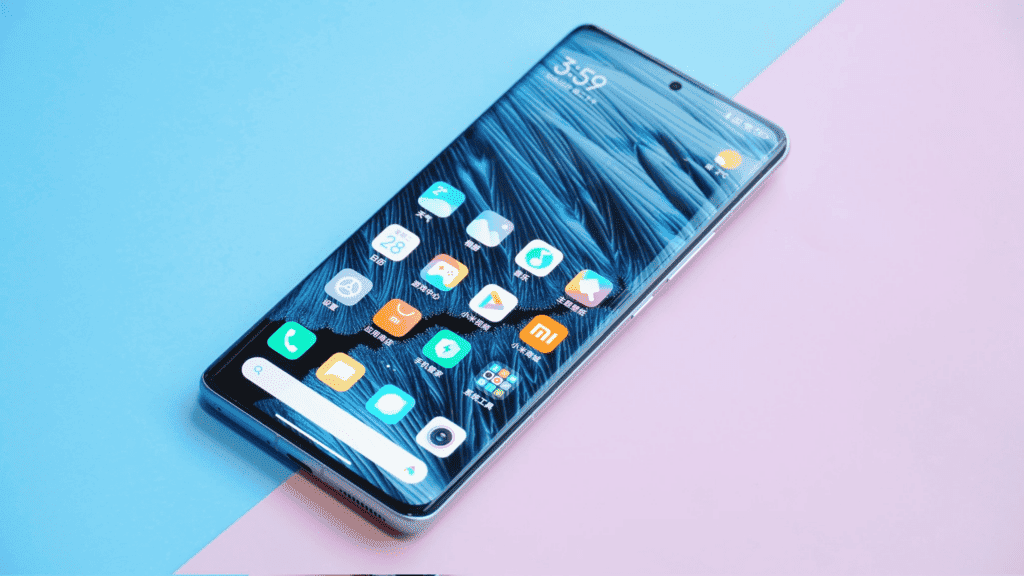
The front camera of the Xiaomi 12 Pro is from Chinese manufacturer, OmniVision (OV32B40). First off, this camera is able to shoot images that will cover the entire screen. The aspect ratio of the image is 16:9 or 4:3. Of course, with this resolution, the images obviously great and appealing. Furthermore, Xiaomi adds a beauty mode which is active by default. However, users can choose to adjust this mode relative to their preferences or completely deactivate it. In addition, this smartphone’s front camera has Cinematic Effects that users can also activate. There is also a portrait mode with a decent effect that delivers top-notch selfies. However, with the portrait mode, HDR is not available.
In the video aspect, the Xiaomi 12 Pro front camera can record videos at Full HD (1920 x 1080 pixels) and 30/60 frames per second. It can also record 720p at 120 frames per second. Furthermore, the front camera video has a subtitle feature that is pretty accurate. You should try it out.
Key front camera specifications:
- 32 MP sensor with 0.7µm pixels
- Fixed-focus f/2.0-aperture lens
- HDR, panorama; 26mm (wide), 1/2.8″
- 1080p@30/60fps, 720p@120fps
Xiaomi 12 Pro succinct specs preview
The Xiaomi 12 Pro comes with a 6.73-inch LTPO AMOLED display that supports 1B colors, 120Hz refresh rate, Dolby Vision, HDR10+, 1500 nits peak brightness. This display supports 1440 x 3200 pixels resolution and has Corning Gorilla Glass Victus protection. The pixel density is 521 PPI thus you have a high-end level display.
Under the hood, this device comes with a flagship processor, Qualcomm Snapdragon 8 Gen 1 SoC. This chip is the best Android flagship processor in the market and it offers enough power and a lag-free experience. The Xiaomi 12 Pro also comes with up to 12GB of RAM and 256GB of internal storage. Unfortunately, there is no microSD card slot, thus, you can not further expand the internal storage of this device. On the rear, it has a triple 50MP camera setup. Specifically, this device comes with a 50MP (Dual Pixel PDAF, OIS) main camera, a 50MP telephoto camera (PDAF, 2x optical zoom), and a 50MP ultra-wide-angle camera. To keep its lights on, this flagship smartphone uses a 4600 mAh that supports 120W fast charging (100% in 18 min), 50W wireless charging (100% in 42 min), and 10W reverse wireless charging.
10. Asus Zenfone 7 Pro
It is not a surprise that Asus’s latest flagship, Zenfone 7 Pro makes the list. This is actually the second time that this device will make our top 10 smartphones for selfies list. The selfie camera of this smartphone is basically the rear camera. The Asus Zenfone 7 Pro comes with a rotating camera design such that the rear camera module can rotate to the front for selfies. Thus, it ditches the regular smartphone design of a set of cameras on the rear and another in front. The implication of this is that the front camera uses the same camera hardware as the rear. Obviously, it will be hard to beat.
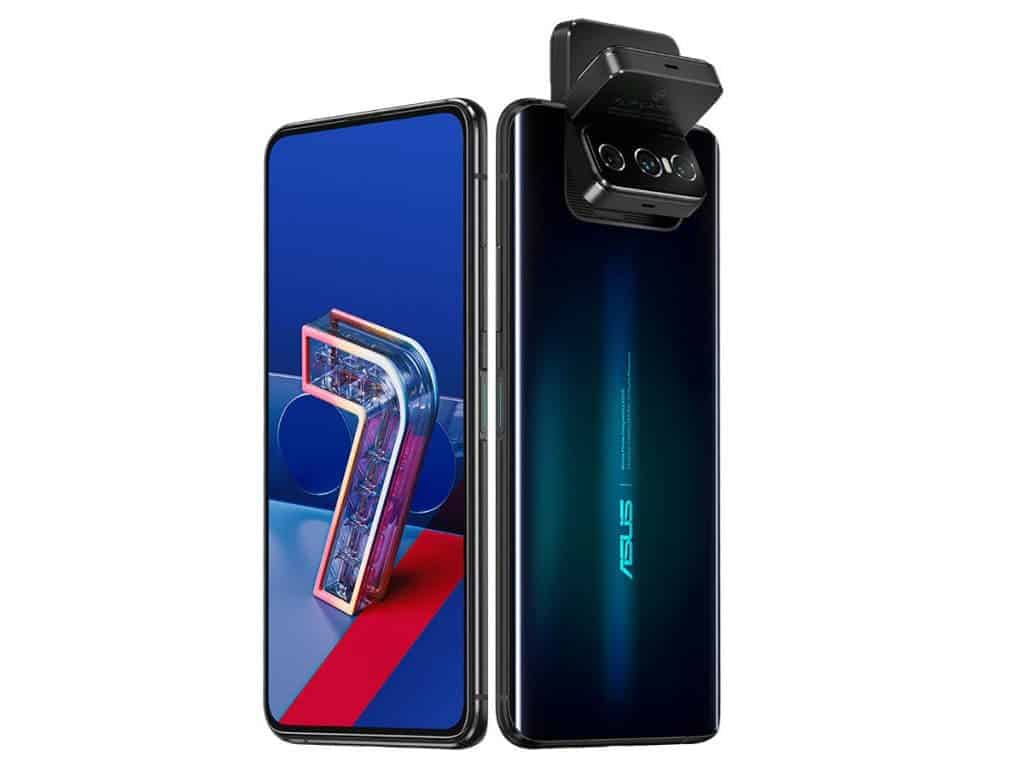
Key front camera specifications:
- Rotating triple-camera
- Primary 64 MP 1/1.72″ sensor, an f/1.8-aperture lens with 26 mm-equivalent focal length, PDAF
- Ultra-wide: 12 MP 1/2.55″ sensor, f/2.2-aperture lens with 16.6 mm-equivalent focal length, PDAF
- Tele: 8 MP sensor, an f/2.4-aperture lens with 80 mm-equivalent focal length, PDAF
- 4320p video at 30 frames per second (8K) (tested at 4K/30 fps)
- Dual-LED flash
- Qualcomm Snapdragon 865+ chipset
The front camera of the Asus Zenfone 7 Pro has a triple camera setup. This includes a 64 MP Quad-Bayer sensor, a 12 MP ultra-wide, and an 8MP telephoto camera. We can see the rest of the details in the specs sheet above.
Looking at the camera performance, this smartphone ticks all the boxes for still images. It comes with excellent exposure in all environments (light or dark), a wide dynamic range as well as accurate colors with nice skin tones. The large sensor outputs excellent details and the texture is overkill for a front camera. The bokeh effect is perfect and for each image, the noise level is nonexistent in the user’s face but slightly available in the background.
The Zenfone 7 Pro autofocus system is one of the best in the industry for front cameras. Thus, there is always an excellent focus irrespective of the shooting distance.
In terms of its video quality, this device is the best globally. This is because it outputs excellent texture and details. Even in low light conditions, it has a very good exposure where its competitors struggle. Just like in the images, for videos, there is little or no noise
Asus Zenfone 7 Pro succinct spec preview
For users who will want more information besides the front camera, here is a brief description of other features. The Asus Zenfone 7 Pro comes with a 6.67 inch AMOLED display that supports a 90Hz refresh rate and resolution of 1080 x 2400 pixels. This smartphone comes with the Snapdragon 865 5G+ SoC (Adreno 650) and supports 8GB of RAM and 256GB of UFS 3.1 storage. To keep its lights on, this device uses a huge 5000 mAh battery that supports 30W fast charging. According to the company, this smartphone gets 60% in 34 min and 100% in 93 min. Other features include 5G wireless connectivity, Wi-Fi, and Bluetooth 5.1.

